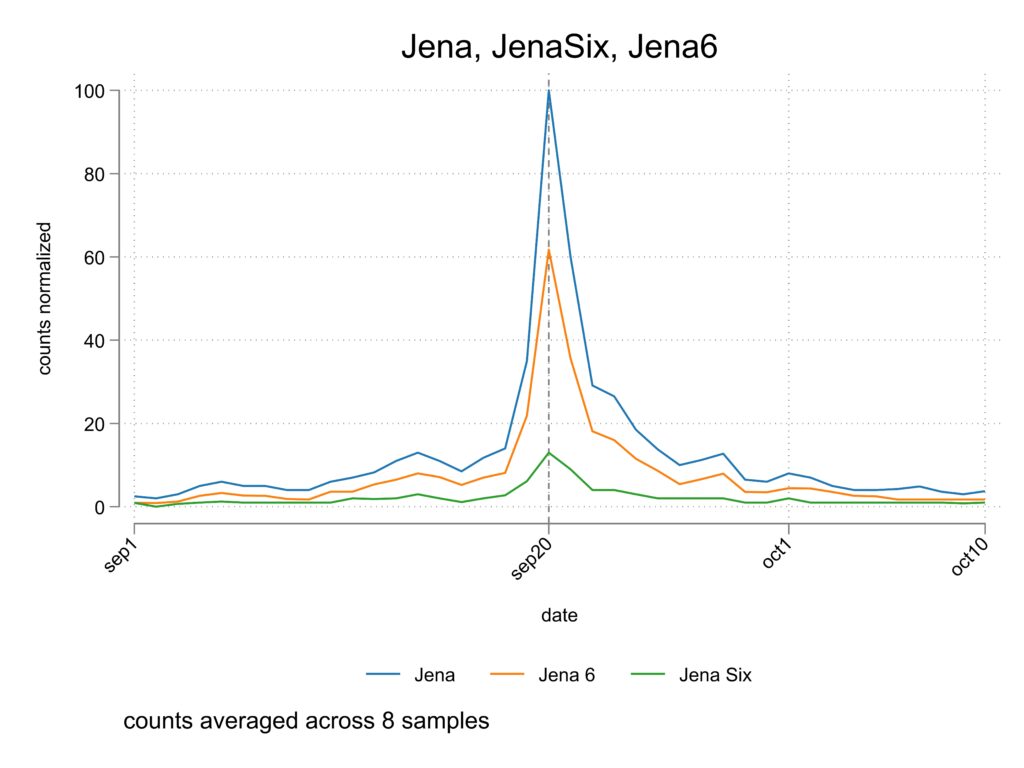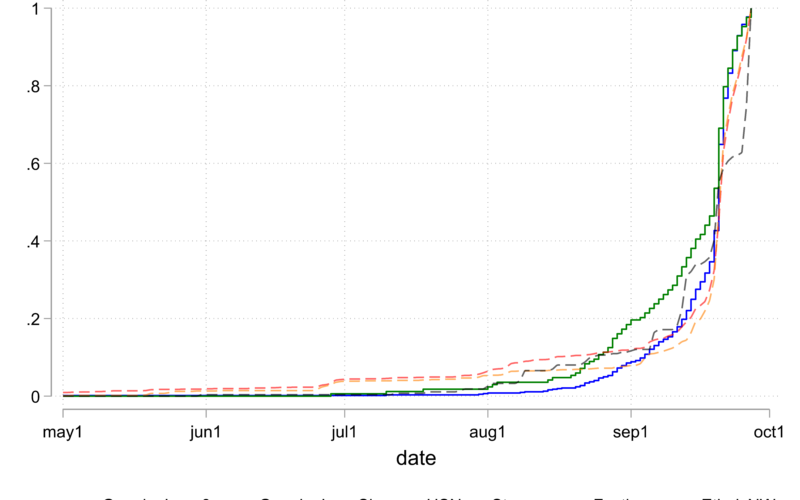The last two posts gave details about trends in media coverage and Google searches about Jena. In this post, I put the two series together to see how they relate.
First, we look at the close-up of coverage and trends in the 40 days around the big protest. The plots in these graphs have been normalized so that the maximum within the time period is set to 100. From top to bottom, the plots are Ethnic NewsWatch, a data source that covers Black newspapers, Factiva, a source that includes international sources and transcripts of television shows, US NewsStream, a source focused on regional and national US news sources, and Google Trends search for the keyword “Jena.” See previous posts for methodological details about each of these searches. What these graphs show: (1) Generally similar patterns of Factiva, US NewsStream, and Google Trends before September 20; (2) Ethnic NewsWatch shows weekly cycles due to weekly publication, has a greater proportion of prospective coverage a week before the rally, peaks a week after the rally, and has more covering continuing into October; (3) Google Trends searching declines more rapidly after September 20 than the mainstream news sources (Factiva, US NewsStream).
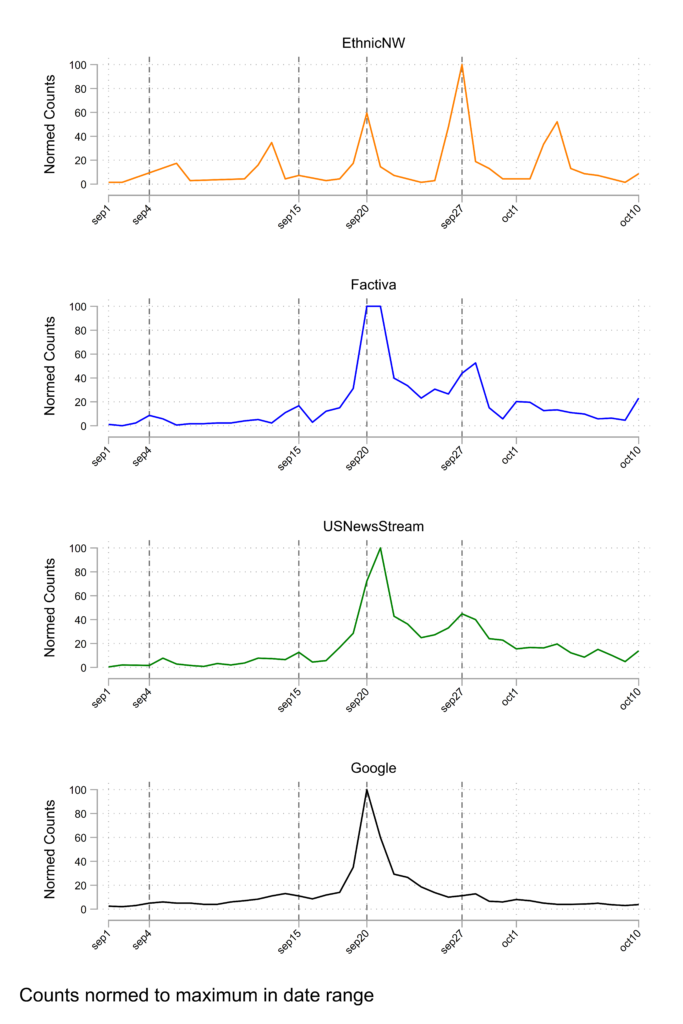
Second, we examine trends between May 1 and September 15. The previous posts have shown small bursts of attention in this period. Keep in mind that most of the US NewsStream coverage before mid-August is from Louisiana sources. (See previous posts.) Findings: (1) Small bursts of news coverage in mainstream sources (Factiva and US NewsStream) around May 20, the Bell trial at the end of June, the rally in Jena at the end of July. (2) Black newspaper coverage does not really enter before July, seeming to follow mainstream coverage. (3) All news news sources seem to respond to Al Sharpton’s visit to Jena around August 4, especially Ethnic NewsWatch and US NewsStream. There is no increase in Google searching in this period. (4) No clear impact of early news media bursts on Google trends. The July 1 spike is probably due to a mention of the case on BlackAmericaWeb.com, part of Tom Joyner’s media company. The July 10 bump is probably due to the Democracy Now broadcast, and there is a little bump after the first Color of Change email on July 17. (5) The August 20 rise in Google Trends is not associated with the volume of news sources. However, two large-circulation weekly magazines, Newsweek (mainstream) and Jet (Black-centric), published articles about the case on August 20. We can find no publication linked to the August 28 rise in Google trends. News sources that week discussed Mychal Bell’s juvenile record and Jena High banning T-shirts supporting the Jena 6. (6) All trends show a local peak around September 4, the day after Labor Day. Overall, we conclude that the drivers of Google Trends are not the same as the drivers of flurries of news media stories.
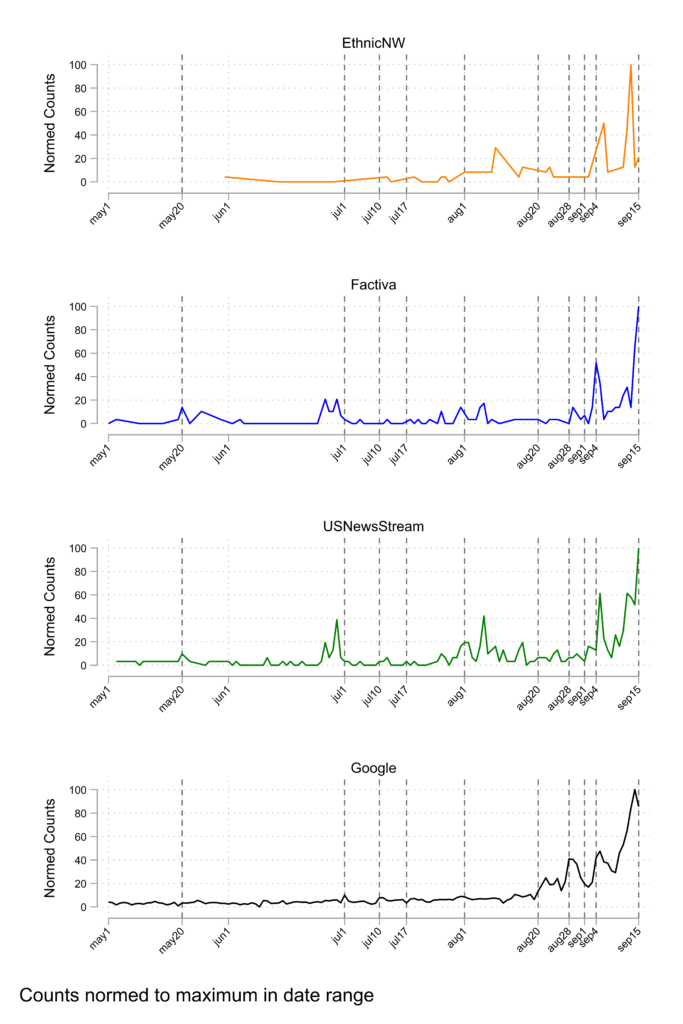
The above graphs include searches for “Jena” which have a baseline level of occurrence because of other referents for Jena besides the Jena 6 case. Another way of comparing is to compare the cumulative coverage of the case in news sources (which used case-specific search terms) to the cumulative Google searches for the more case-specific terms “Jena 6” and “Jena Six.” We take September 27, a week after the rally, as the end point for this graph because this is the peak in coverage of the case from Ethnic NewsWatch which covers Black newspapers that are mostly published weekly As discussed in a previous post, searches for Jena Six and Jena 6 are too rare before August to have stable counts and this graph is based on only one Google Trends sample, but the trends in this graph parallel the trends in the multi-sample graphs in previous posts. This cumulative plot suggests that mainstream news was covering the case at a low level through August, before popular searching was enough to show up in Google Trends, that the pace of searching for first Jena Six and then Jena 6 picked up in mid August (as seen in previous analyses) at the same time as coverage in Ethnic NewsWatch picked up. In late August and early September, the pace of Google searches for these terms and articles in Ethnic NewsWatch grew faster than mainstream news coverage, which caught up with a flurry of coverage at the last minute, right around the days of the big rally on September 20. Overall, this suggests that public awareness of the case was following mainstream news through mid-August and then Black-centric sources were pushing awareness in late August and early September.
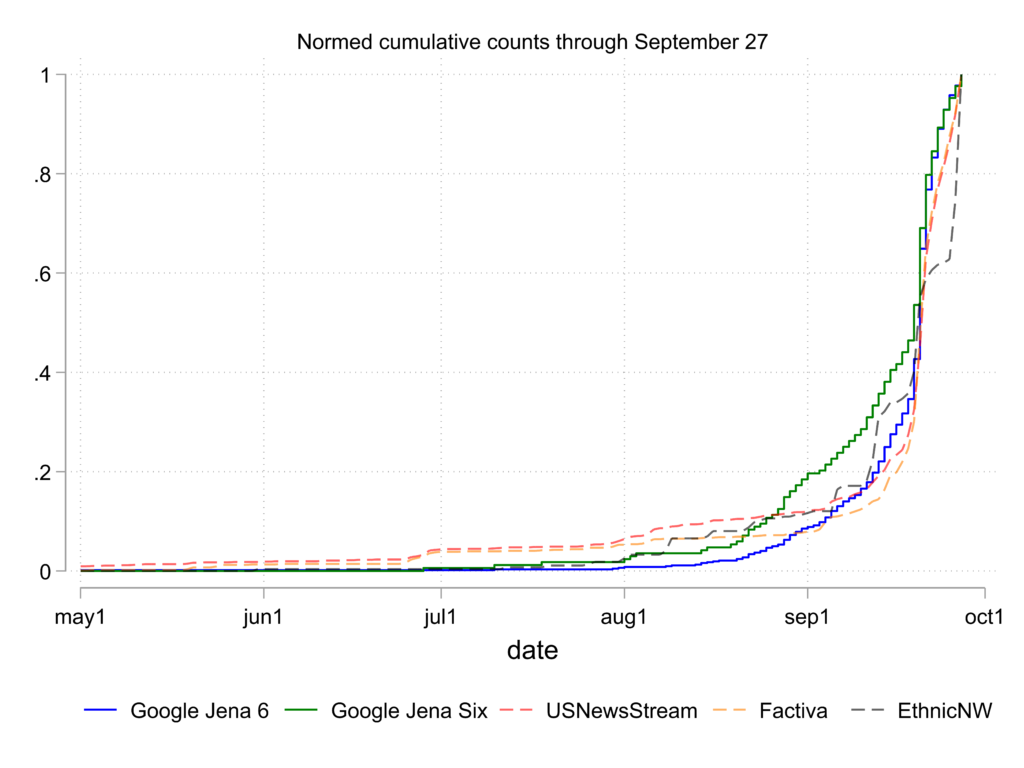
In assessing the cumulative trends in Google searches, it is useful to remember that searching for Jena 6 is much more common than searching for Jena Six at the peak around the September 20 rally.
